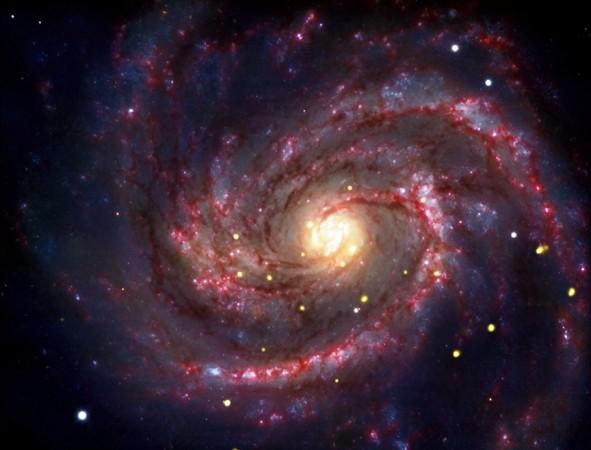
For the first time ever, the initial burst of light that is given off by an exploding star — known as 'supernova' — has been captured in photographs. The light was observed in a dying star 80 million light-years away, which an amateur Argentinian astronomer managed to frame, right at that exact moment.
Captured by Victor Buso from Rozario from Argentina, these images gave scientists their first view of the initial flash that a supernova emits – something which no one had been able to capture to date.
This was primarily due to the fact that stars explode at random in the sky, and most of these bursts are fleeting. In addition to that, most instances of a supernova are spotted only a long time after the initial blast, which makes Buso's observations a 'one-in-ten-million unprecedented' occurrence, as per scientists.
As described in the journal Nature, Buso had first spotted the phenomenon back in 2016, in the spiral galaxy NGC 613, while testing his new camera. Upon examining the series of short-exposure photographs, he observed a faint light that brightened quickly and was seen only in his second set of photos.
After learning about his discovery, astronomer Melina Bersten and her colleagues at the Instituto de Astrofísica de La Plata in Argentina soon concluded that Buso had, in fact, caught the part of the initial hours right after light emerges from an exploding star.
"This is the first confirmation of the existence of this phase, which is really in agreement with the models," she said.
An amateur astronomer testing a new #Camera happens to catch a supernova as it's being born https://t.co/UwL6697KdY pic.twitter.com/OJ6YUGWeYH
— Space Newz (@Space__Newz) February 22, 2018
The study also states that supernova is caused by a shock in the star's core – something which had only been theorized prior to this but never actually observed before. When pressure wave from the exploding core hits and heats up the gas at the star's surface, the extremely high temperature it reaches, makes it flash and brighten.
Luckily for professionals and experts in the field, the new revelations can now provide important insights into the star's physical nature right before its explosive demise, as well as the nature of the explosion itself.
"Professional astronomers have long been searching for such an event," said the University of California at Berkeley astronomer Alex Filippenko, who followed up Buso's discovery with scientific observations of the explosion, called SN 2016gkg.
"Observations of stars in the first moments they begin exploding provide information that cannot be directly obtained in any other way," the astronomer added.
The follow-up research was also able to figure out the type of the supernova and the details of the original star it came from. Studying the light coming from the explosion, they found that it was a Type IIb supernova that could have possibly come from an unusual class of stars known as yellow supergiants.
They also said that the original star — which belonged to a binary system — may have weighed in around 20 solar masses. But it had probably shrunk to just five solar masses before the explosion, owing to the gravitational tug of its companion star.
As for the amateur Buso's remarkable observation, Gaston Folatelli, who also helped the lead work with Bersten, at the Instituto de Astrofísica de La Plata, said: "Victor was really very lucky — cannot deny that — but also he had enough expertise to be able to see the object and to realize that this was possible."
But so far, the supernova's behavior seems to match with the expectations of the astronomers, who have also shown interest in studying the SN 2016gkg further, so that they are able to dig deeper and find out more precisely about such stellar 'deaths'.

















